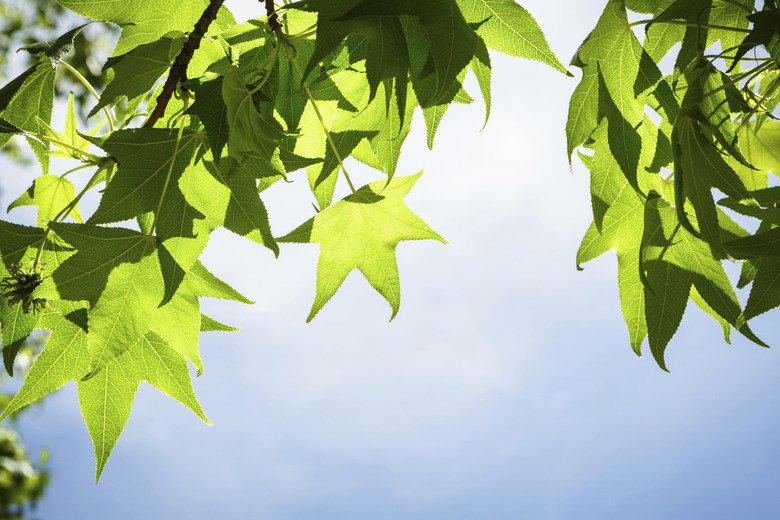How To Get A Sweet Gum Tree To Stop Producing Balls
Summer shade and vibrant fall leaf color are merits of the sweet gum tree (Liquidambar styraciflua). The tradeoff for these perks is a source of aggravation for some gardeners: round, spiny fruits, or balls, that litter the ground, making a simple walk across the yard a precarious one. Chemical treatments, however, can stop a tree's fruit production, which keeps the lawn free of that litter. Sweet gum is hardy in U.S. Department of Agriculture plant hardiness zones 5 through 9.
The Problem
The Problem
The round fruit balls are produced from fertilized flowers. As a monoecious plant, a sweet gum bears male and female flowers. This means that only one tree is needed for the flowers to be pollinated, and a single tree can produce the spiky fruits even when another sweet gum tree is not in sight. A notable exception is "Rotundiloba" (Liquidambar styraciflua "Rotundiloba", USDA zones 5 through 9), which is a sterile female cultivar that does not produce fruits. If you have more than one sweet gum tree, each one must be chemically treated to stop fruit production.
A Hormonal Solution
A Hormonal Solution
Growth regulators — naturally produced or synthetic hormones — disrupt the growth of a plant or of a single plant part. Introducing such a chemical alters sweet gum's natural hormone levels, prompting the tree to abort its fruits. The chemical breaks down into ethylene, a naturally occurring compound that sweet gum produces when under stress. If a sweet gum is flowering when the chemical induces ethylene production, it responds by aborting the flowers.
The Flowers
The Flowers
Timing is everything when you spray a sweet gum to prevent its fruits from forming. When the flowers appear in spring — typically in April and May — spray all the blooms with an ethylene growth regulator, such as ethephon. Typically, 1 quart of the chemical needs to be mixed with 10 gallons of water to make a spray. If you want a smaller quantity of the spray, mix 3 fluid ounces of the chemical with 1 gallon of water. Spray the sweet gum flowers until they're wet but not to the point the spray runs off the flowers. If you don't use enough spray, then some fruits may form; if you use too much spray, the tree may lose some leaves. Overspray that drifts to nearby plants may damage them, and the spray also may damage automobile paint. Because a sweet gum tree may grow 80 feet tall and hose-end sprayers typically have a maximum good-pressure range of up to 30 feet, spraying a mature sweet gum adequately is difficult for a homeowner.
The Trunk
The Trunk
If your sweet gum is too tall to spray, or if you don't want to attempt spraying a small tree, you can stop fruit production by having a certified arborist administer a trunk injection. A tree that is a candidate for the injection must have a trunk at least 2 inches in diameter, and the tree cannot have received a spray or soil treatment within two weeks. The certified arborist will inject the tree with a plant-growth regulator that contains the chemical indole-3-butyric acid, which will move through the tree's vascular system and reach the developing flowers, killing them before they set fruit.
References
- Missouri Botanical Garden: Liquidambar Styraciflua
- Missouri Botanical Garden: Liquidambar Styraciflua "Rotundiloba"
- West Virginia University Extension Service: Sweet Gum Ball Control
- University of Illinois Extension and Atlanta Journal-Constitution: Sweet Gum Balls Are Not So Sweet
- University of Florida IFAS Extension: Plant Growth Regulators
